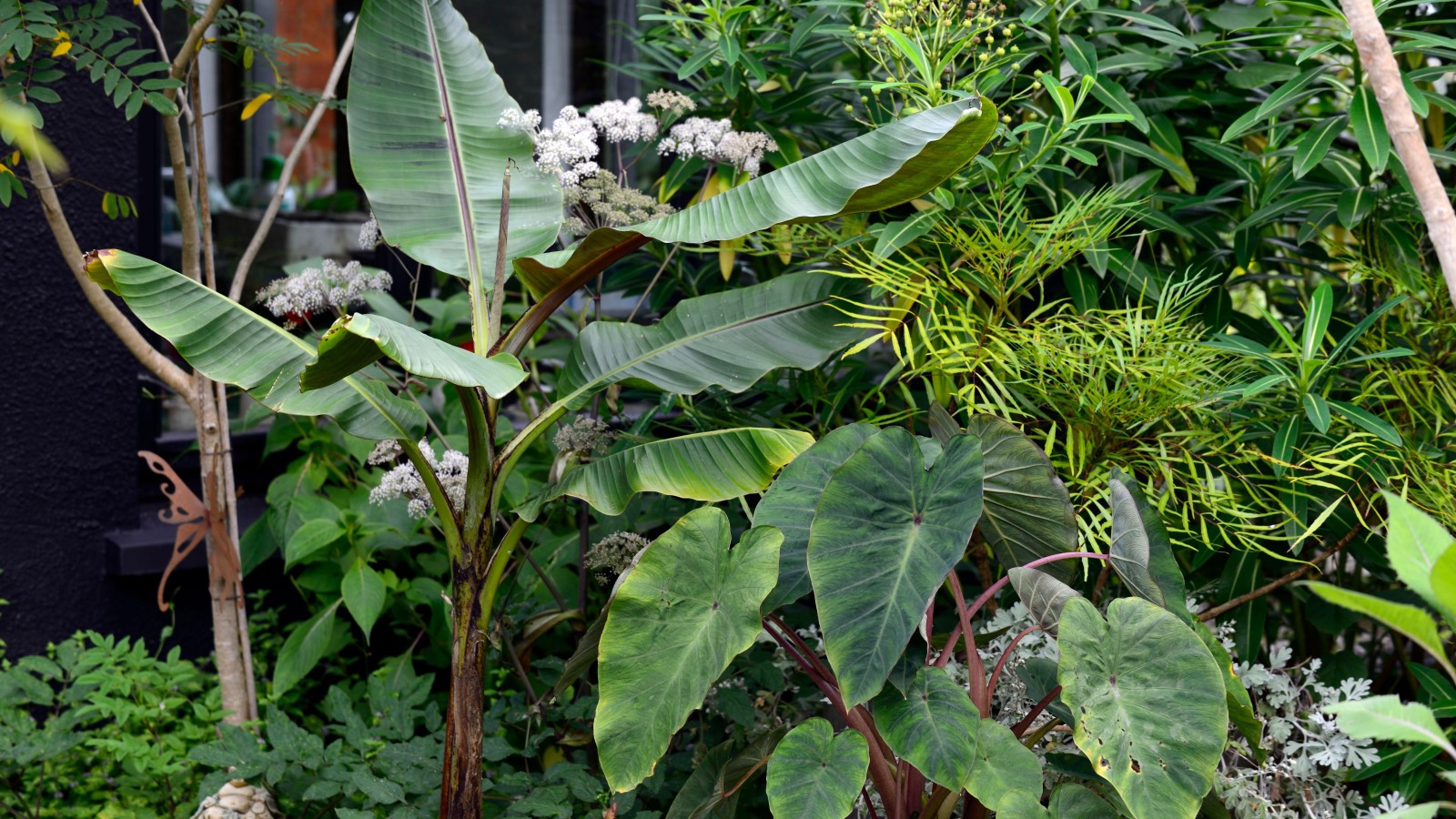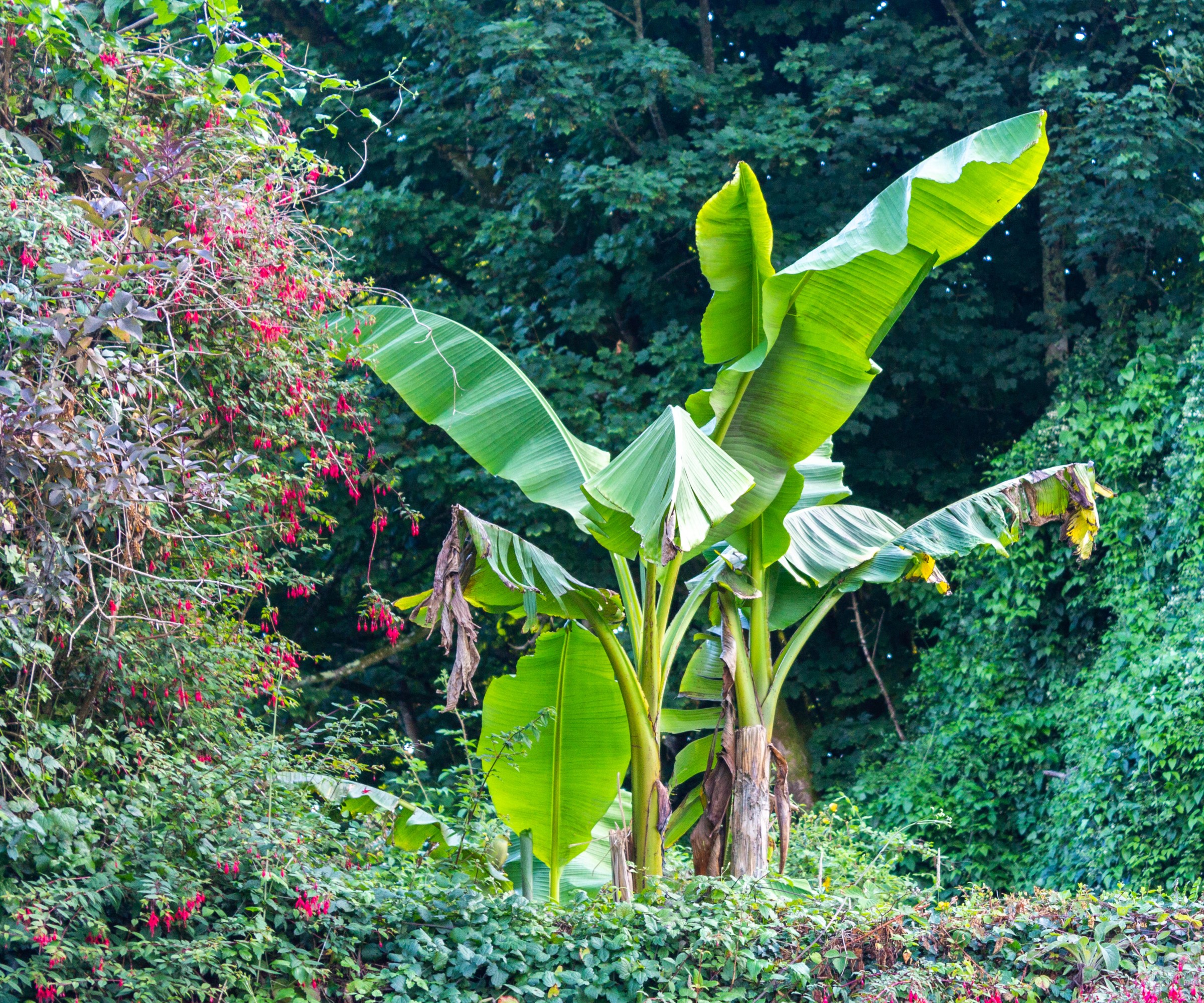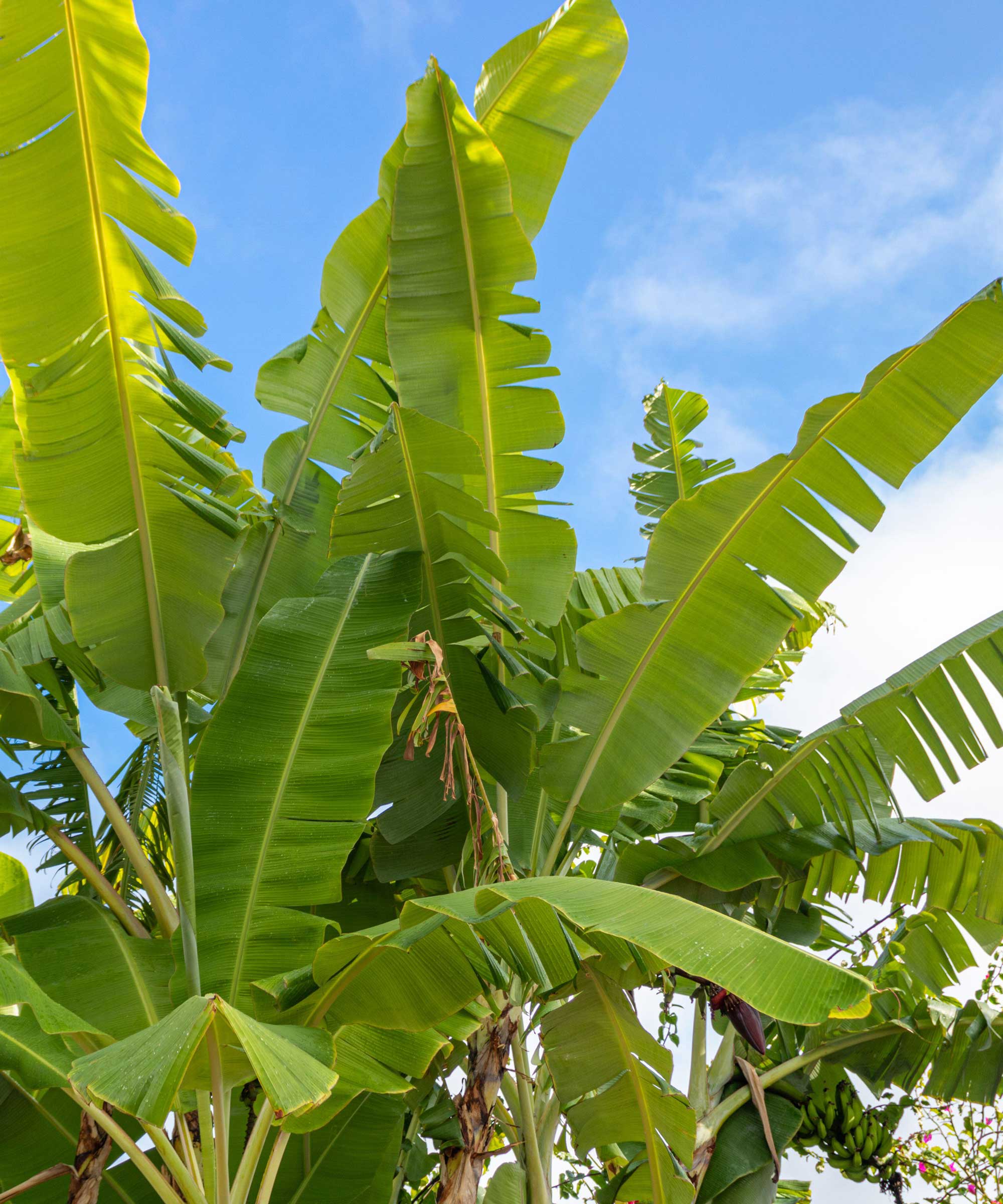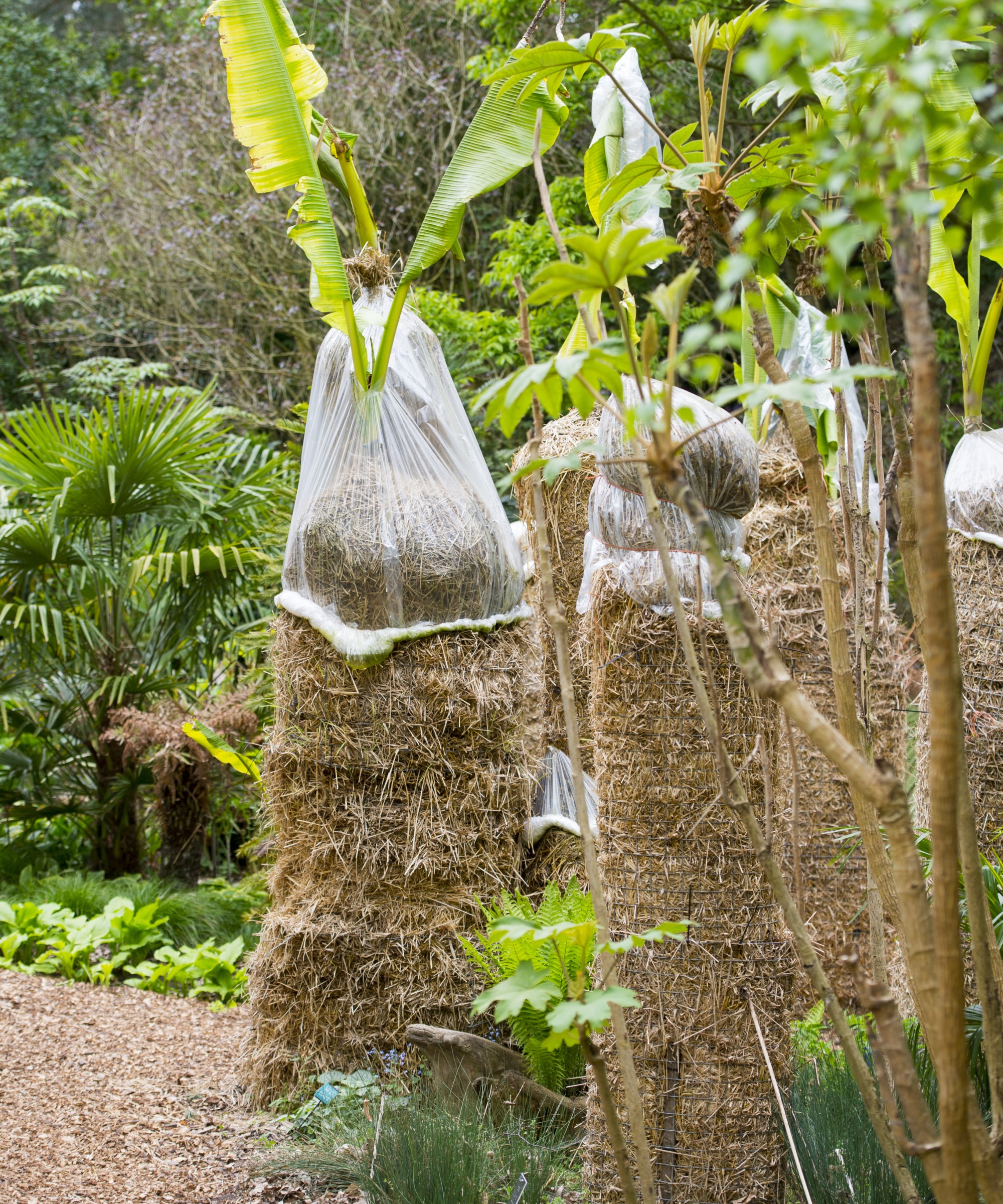How to grow cold hardy banana trees for a tropical garden feel even in cooler climates
You don’t have to live in a hot tropical climate to have banana trees growing in your backyard


When you think of growing banana trees, you conjure images of hot and sunny climates and beachside trees packed with fruits. Bananas are often grown for their large and statuesque foliage, rather than for the fruits, and you can actually grow bananas in colder climates.
Cold hardy banana trees are suited to cooler conditions and this opens up the opportunity for people to add them to their gardens. The Musa genus of bananas can survive colder temperatures than more tropical types of bananas, but will still benefit from being protected from the harshest winter weather.
If you want to grow a banana tree in your backyard and don’t have the luxury of a hot climate, cold hardy banana trees are well worth considering. You can benefit from the fantastic foliage and tropical feel that these trees will add to your garden, and they are even suited to being grown in pots.

Musa bananas can thrive in cooler climates
Benefits of cold hardy banana trees
Banana plants are fantastic choices for tropical garden ideas thanks to their lush foliage. They are suited to warm climates, but cold hardy banana trees mean that people living in cooler US hardiness zones can also experience the joys of having bananas as part of their garden ideas.
Cold hardy banana trees can tolerate colder temperatures, and can even overwinter successfully outside in some climates. Bananas in the Musa genus can overwinter down to zone 4, though will need protection in winter in zones 5-8. There are around 70 species of Musa and these plants grow successfully in milder temperatures.
Musa banana trees mean you can enjoy the tropical foliage of a banana plant, however this often comes without the production of fruit. Many edible bananas do not tolerate cold below 50F and frost kills them. Cold hardy banana trees can survive colder temperatures but take over a year to flower and fruit, meaning in many colder climates it is unlikely you will get fruit on your tree. It should be noted that Musa bananas rarely produce fruit, and when they do they tend to be inedible.
Jeff Rugg, author of Greener View, says that ‘any part of the country with an occasional frost will have to bring the banana plant indoors if the person wants fruit’. He adds: ‘They must be protected from cool weather and especially frost for 10-12 months to produce fruit. There are several non-edible varieties that can survive below freezing temperatures.’
Design expertise in your inbox – from inspiring decorating ideas and beautiful celebrity homes to practical gardening advice and shopping round-ups.
See the range of banana trees available at Fast Growing Trees

Jeff Rugg is a highly experienced gardener and writer. He has authored the Greener View Gardening book and also the Greener View Gardening weekly newspaper column for over 32 years.

Banana trees want to grow in lots of sun
How to grow a cold hardy banana tree
Cold hardy bananas are fast growing trees and you do need to make sure you have enough space in your garden to accommodate one. They can grow between 10 and 15 feet in height and potentially with a canopy span of 6-8 feet - this can make them great for shade garden ideas as their large foliage can give garden privacy or create a cooler haven for plants that love shade. If you are short of space, or need patio ideas, bananas can be fantastic trees for pots, though they will not grow as large unless they have a substantial pot to live in.
The trees prosper in full sun and fertile, rich, and well-draining soil. Bananas can tolerate many soil types but do want to be sitting in moist, waterlogged soil, and will need regular watering in drought conditions. The trees will benefit from protection from strong winds.
Banana trees are commonly available to purchase from retailers or online. Matt Bollinger from Stark Bros nursery in Missouri, claims that plants are ‘typically available to buy in the spring and throughout the summer’. He adds: ‘You can plant them anytime when keeping the ideal growing conditions in mind.’
After picking the ideal site, you want to dig a large hole to accommodate the root system. It is recommended to mix some well-rotted compost or manure in with the soil as you backfill and firm down the soil around the roots with your feet after filling.
Water plants regularly after planting and give the tree a drink once or twice a week. A recommended way to check the moisture levels, and this is a definite when watering plants in containers, is to use your fingers to see how wet the soil is a few inches under the surface. If it feels dry, then the time is right to water the tree.
Cold hardy banana trees will benefit from regular fertilizing, especially if being grown in a container. They need a lot of nutrients to grow quickly during the season and require feeding every 2-4 weeks during the summer months. It will benefit from an organic high-nitrogen fertilizer earlier in the year to grow strong and healthily, before switching to a feed that is higher in phosphorus and potassium once it starts to flower.

Banana leaves grow incredibly fast
How to overwinter a cold hardy banana tree
In colder climates, even cold hardy banana trees will require some protection to ensure they survive the worst of the winter weather. They can be kept outside in the yard, complete with added defences in place, or lifted and brought indoors for winter.
To protect the plants in situ in the garden, it is best recommended to cut the stems back to two feet above the ground after the first frost. A wire basket should also be put in place around the trunk, which can be filled with leaves or straw to insulate the tree from colder temperatures. Alternatively, the stem can be wrapped in fleece, bubble wrap or burlap. A thick layer of mulch should also be spread around the base of the tree to protect the roots.
When it comes to lifting and bringing bananas indoors, Jeff Rugg says: ‘Banana plants can be dug up in the fall and stored with not much soil around the roots until spring. The top will die back and get cut off in the spring or fall. Or they can be dug up, potted, and grown in a warm sunny room over the winter.’
Bananas in pots can be brought into a sunny room indoors before the first frost to grow on. The alternative to growing bananas indoors over winter is to remove the foliage, mulch the top of the pot and wrap it in fleece and bubble wrap to protect it. After cutting the leaves, you can even store the pot in a dark frost-free place at a temperature of 40-50°F over winter. It will go dormant for winter, but it is important to not let the soil dry out completely and remember to occasionally give the pot a drop of water.

Cold hardy banana trees will need winter protection in many zones
FAQs
What is the most cold hardy banana tree?
The most cold hardy banana tree is regarded as Musa basjoo, also known as the Japanese banana. Musa basjoo can tolerate sub-zero temperatures when they are properly protected, making them suitable for a wide range of backyard ideas, providing you ensure to mulch and guard the plants for winter. You can get Musa basjoo trees from Fast Growing Trees that can be grown successfully outdoors in zones 5-11.
How fast do cold hardy banana trees grow?
Cold hardy banana trees are very fast growers and are capable of growing up to 12 feet in one growing season. These trees are rapid at producing their large leaves and can potentially grow two feet per week when they are established.
While growing cold hardy banana trees means you will not get fruit to eat, they are still seriously worth considering. These large and impressive specimens can be great plants for around a pool, and their foliage can bring tropical or Mediterranean garden vibes to an outdoor space.

Drew has worked as a writer since 2008 and was also a professional gardener for many years. As a trained horticulturist, he worked in prestigious historic gardens, including Hanbury Hall and the world-famous Hidcote Manor Garden. He also spent time as a specialist kitchen gardener at Soho Farmhouse and Netherby Hall, where he grew vegetables, fruit, herbs, and cut flowers for restaurants. Drew has written for numerous print and online publications and is an allotment holder and garden blogger. He is shortlisted for the Digital Gardening Writer of the Year at the 2025 Garden Media Guild Awards.